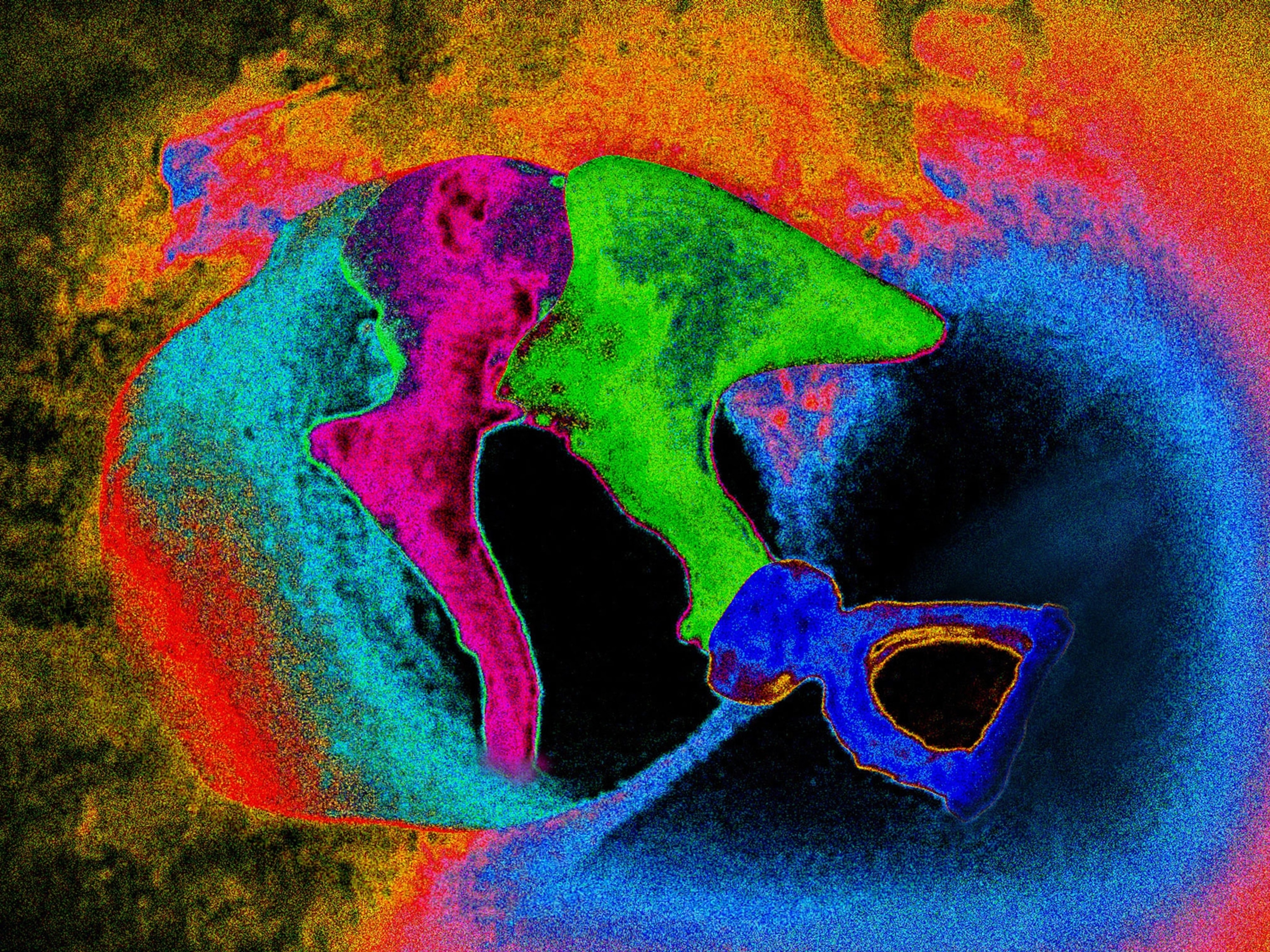Our lungs fuel us with oxygen, the body's life-sustaining gas. They breathe in air, then extract the oxygen and pass it into the bloodstream, where it's rushed off to the tissues and organs that require it to function.
Oxygen drives the process of respiration, which provides our cells with energy. When we exhale, we produce carbon dioxide as a byproduct. Without this vital exchange, our cells would quickly die and leave the body to suffocate.
Since the lungs process air, they are the only internal organs that are constantly exposed to the external environment. Central to the human respiratory system, they breathe in between 2,100 and 2,400 gallons (8,000 and 9,000 liters) of air each day—the amount needed to oxygenate the 2,400 gallons (9,000 liters) or so of blood that is pumped through the heart daily.
Intricate Construction
Our two lungs are made up of a complex latticework of tubes, which are suspended, on either side of the heart, inside the chest cavity on a framework of elastic fibers. Air is drawn in via the mouth and the nose, the latter acting as an air filter by trapping dust particles on its hairs. The air is warmed up before passing down the windpipe, where it's divided at the bottom between two airways called bronchi that lead to either lung.
Within the lungs, the mucus-lined bronchi split like the branches of a tree into tens of thousands of ever smaller tubes (bronchioles), which connect to tiny sacs called alveoli. The average adult's lungs contain about 600 million of these spongy, air-filled structures. There are enough alveoli in just one lung to cover an area roughly the size of a tennis court.
The alveoli are where the crucial gas exchange takes place. The air sacs are surrounded by a dense network of minute blood vessels, or capillaries, which connect to the heart. Those that link to the pulmonary arteries carry deoxygenated blood that needs to be refreshed. Oxygen passes through the incredibly thin walls of the alveoli into the capillaries and is then carried back to the heart via the pulmonary veins. At the same time, carbon dioxide is removed from the blood through the same process of diffusion.
The rate at which we breathe is controlled by the brain, which is quick to sense changes in gas concentrations. This is certainly in the brain's interests—it's the body's biggest user of oxygen and the first organ to suffer if there's a shortage.
In and Out
The actual job of breathing is done mainly by the diaphragm, the sheet of muscles between the chest and abdomen. These muscles contract when we breathe in, expanding the lungs and drawing in air. We breathe out simply by relaxing the diaphragm; the lungs deflate like balloons.
Lungs are delicate organs and vulnerable to a range of illnesses. The most common of these in Western countries are bronchitis and emphysema, which are often caused by smoking. Tubes inside the lung become chronically inflamed, producing excess mucus. Smoking can also lead to lung cancer, the world's major cancer, which is diagnosed in 1.4 million people a year.
Related Topics
You May Also Like
Go Further
Animals
- How can we protect grizzlies from their biggest threat—trains?How can we protect grizzlies from their biggest threat—trains?
- This ‘saber-toothed’ salmon wasn’t quite what we thoughtThis ‘saber-toothed’ salmon wasn’t quite what we thought
- Why this rhino-zebra friendship makes perfect senseWhy this rhino-zebra friendship makes perfect sense
- When did bioluminescence evolve? It’s older than we thought.When did bioluminescence evolve? It’s older than we thought.
- Soy, skim … spider. Are any of these technically milk?Soy, skim … spider. Are any of these technically milk?
Environment
- Are the Great Lakes the key to solving America’s emissions conundrum?Are the Great Lakes the key to solving America’s emissions conundrum?
- The world’s historic sites face climate change. Can Petra lead the way?The world’s historic sites face climate change. Can Petra lead the way?
- This pristine piece of the Amazon shows nature’s resilienceThis pristine piece of the Amazon shows nature’s resilience
- Listen to 30 years of climate change transformed into haunting musicListen to 30 years of climate change transformed into haunting music
History & Culture
- Meet the original members of the tortured poets departmentMeet the original members of the tortured poets department
- Séances at the White House? Why these first ladies turned to the occultSéances at the White House? Why these first ladies turned to the occult
- Gambling is everywhere now. When is that a problem?Gambling is everywhere now. When is that a problem?
- Beauty is pain—at least it was in 17th-century SpainBeauty is pain—at least it was in 17th-century Spain
Science
- Here's how astronomers found one of the rarest phenomenons in spaceHere's how astronomers found one of the rarest phenomenons in space
- Not an extrovert or introvert? There’s a word for that.Not an extrovert or introvert? There’s a word for that.
- NASA has a plan to clean up space junk—but is going green enough?NASA has a plan to clean up space junk—but is going green enough?
- Soy, skim … spider. Are any of these technically milk?Soy, skim … spider. Are any of these technically milk?
Travel
- This tomb diver was among the first to swim beneath a pyramidThis tomb diver was among the first to swim beneath a pyramid
- Dina Macki on Omani cuisine and Zanzibari flavoursDina Macki on Omani cuisine and Zanzibari flavours
- How to see Mexico's Baja California beyond the beachesHow to see Mexico's Baja California beyond the beaches
- Could Mexico's Chepe Express be the ultimate slow rail adventure?Could Mexico's Chepe Express be the ultimate slow rail adventure?














